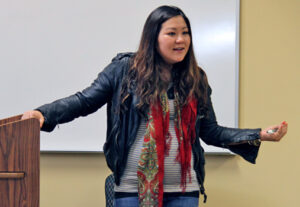
Part 5 - Art as the Pivot: Art as Midwife
(Part Five of a Five Part Serialized Blog)
Art is a midwife of transformation and transmutation. Art transforms us through our encounter with it, both in the world and out of our hearts and hands. Art also transmutes what we’ve created into something meaningful and powerful for people other than ourselves. How many times have we written something, taught something, shared something, only to hear our students share with us that they received and heard something we would never have guessed?
A midwife helps to bring forth new life, but soon afterward, the midwife departs, and it is our responsibility to nurture and care for that new and sacred life. Something I can’t quite name occurred in this class, and I don’t know if there is a map or a listicle that can help me or you recreate it. Perhaps the beginning of the map emerges from the questions I began to pose in the midst of the chaos and death of 2020. Is what I’m teaching, what I’m asking students to internalize and wrestle with, speaking forward into our futures? Whose futures? Is what I’m teaching meeting the needs—embodied, individual, and communal—that are making themselves known in the classroom? Or is my teaching, my agenda, burying those needs, diminishing what is being excavated and surfaced in student’s lives and in mine? Are participants, including myself, having to disengage with their innermost needs, their generational needs, to “learn”?
I don’t know if I’ll ever teach the Spirituality and the Arts class again. It was suspended time. A unique experience that I am still processing and trying to understand. I am transformed by it. I will never see my students the same way again. The way they taught one another and me out of the wealth of their experiences, through what their heart and hands made, astounded me.
Teaching art as theology and spirituality was a remarkable pivot from the face-to-face classroom and from the online classroom space that I had learned to carefully curate over the years. Centering art and art making as teacher felt like liminal space where the conditions, needs, questions, and urgency of the moment converged to build something that maybe couldn’t or shouldn’t be repeated. In many ways, this course took more out of me than any other class I’ve ever taught. It was also the pivot each of us needed in teaching and learning in theological education for these times.
The course was a shift into the now and the immediacy of our collective consciousness and bodies moving through painful and joyful times together. The class was a shift into thinking beyond isolation, beyond death and death-dealing, into growing and truth telling. Art, both the process of making and sharing what we made, midwifed our anger, sorrow, grief, and joy in ways that a traditional course might not have made possible. It felt raw and holy. As a spiritual practice, our time together learning about the connection between art, spirituality, and theology became a collective prayer in many voices, uttering both similar and dissonant cries, chaotic and beautiful at the same time. We are each still discovering the ways in which the course, now complete, is ushering forth transformation and transmutation in our lives and being. And yes, everyone received an “A,” whatever that means now.
Leave a Reply